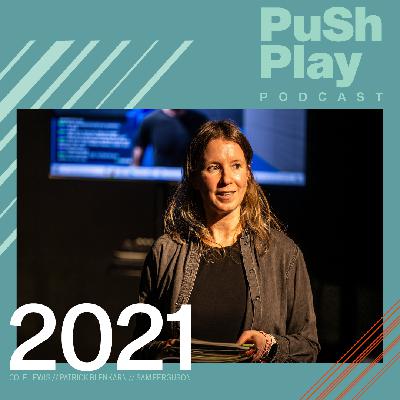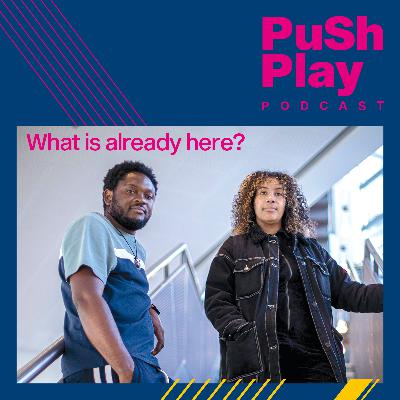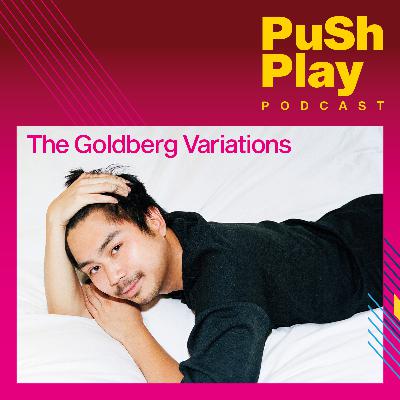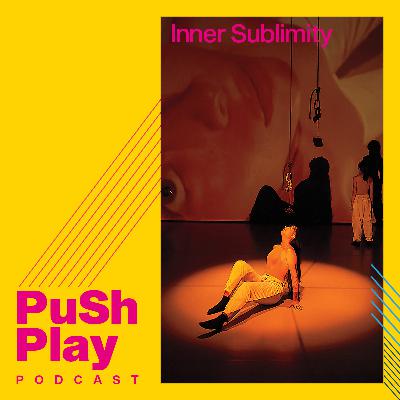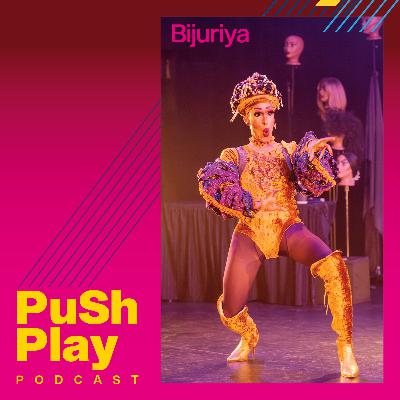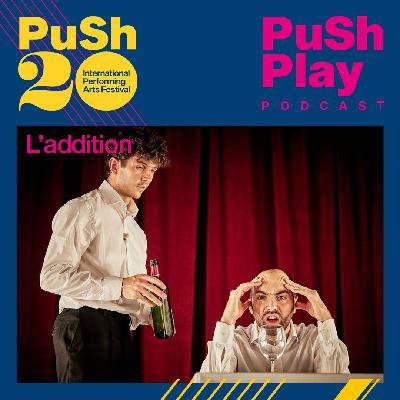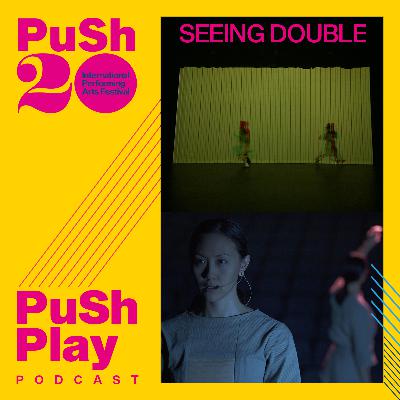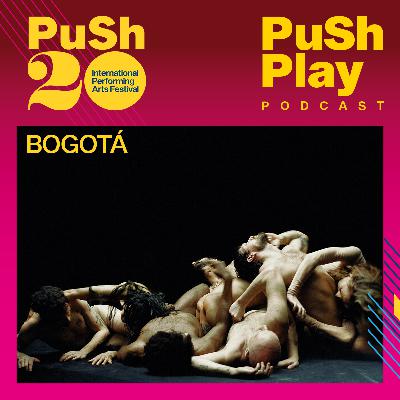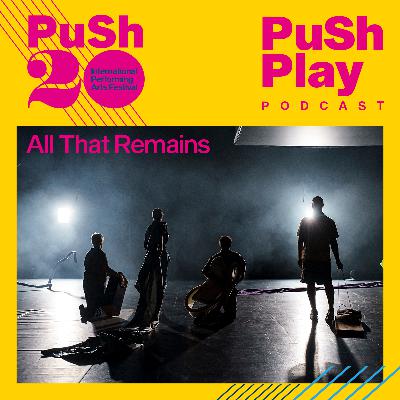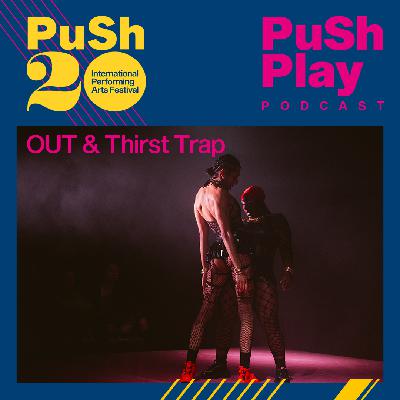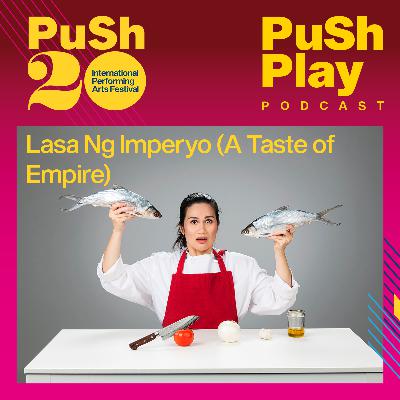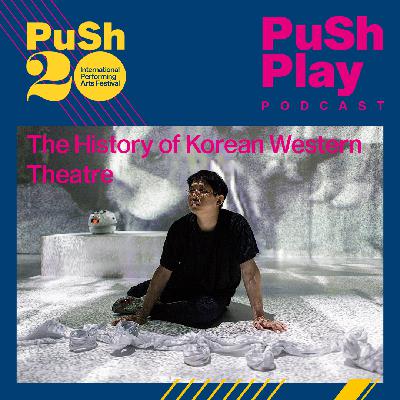Ep. 49 - The One to One Affair (Marie Chouinard)
Description
Gabrielle Martin chats with the legendary Marie Chouinard. Marie's Prelude to the Afternoon of a Faun and Rite of Spring will be presented at the PuSh International Performing Arts Festival on February 3 at the Chilliwack Cultural Centre.
Show Notes
Gabrielle and Marie discuss:
-
Can you describe the evolution of your artistic inquiry, especially since you started professional practice in 1978 and founded your own company in 1990?
-
Are you still called to the solo form?
-
How is your work connected to something more profound or spiritual?
-
How has the impact of your work changed as the sociopolitical context has shifted over time?
-
What are the challenges of arts leadership and how have they changed over the years?
-
What are you currently researching?
About Marie Chouinard
Marie Chouinard was born in Quebec. At the age of 16, her life was transformed after spending 4 months alone in Percé. As a choreographer, she traveled the world over as soloist for 12 years before founding the COMPAGNIE MARIE CHOUINARD in 1990. Her works, radical and profound, with a unique signature are nonetheless enduring and appear in the repertoires of major international ballet companies.
Marie Chouinard is a director (films, applications, virtual reality works), an author (Zéro Douze, Chantiers des extases), a visual artist (photographs, drawings, installations), and she also creates choreographies for site-specific installations, for the screen, and in real-time for the web. Named Officière des Arts et des Lettre in France, recipient of a Bessie Award in New York, she has received some thirty of the most prestigious awards and honors. She founded the Prix de la Danse de Montréal in 2011 and was director of dance at the Venice Biennale from 2017 to 2020. Marie Chouinard is preparing a solo exhibition.
Land Acknowledgement
This conversation was recorded on the unceded, stolen and ancestral territories of the Coast Salish Peoples: the xʷməθkʷəy̓əm (Musqueam), Skwxwú7mesh (Squamish) and Səl̓ílwətaɬ (Tsleil-Waututh), colonially known as Vancouver.
Marie joined the conversation from what is now known as Montreal, on the traditional territory of the Kanien'kehà:ka, a place which has long served as a site of meeting and exchange amongst many First Nations including the Kanien'kehá:ka of the Haudenosaunee Confederacy, Huron/Wendat, Abenaki, and Anishinaabeg.
It is our duty to establish right relations with the people on whose territories we live and work, and with the land itself.
Show Transcript
Hello and welcome to Push Play, a Push Festival podcast featuring conversations with artists who are pushing boundaries and playing with form. I'm Gabrielle Martin, Push's Director of Programming, and today's episode highlights play as a well source of energy.
I'm speaking with Mary Schwinard, choreographer of Prelude to the Afternoon of a Faun and The Rite of Spring, which are being presented at the Push Festival February 3rd, 2025. Mary Schwinard presents two unorthodox performances inspired by Ballet Roos masterpieces and reimagined into viscerally provocative experiences.
Prelude to the Afternoon of a Faun interprets the lustful flirtations of a half goat creature with raw primal physicality, and The Rite of Spring captures the explosive energy of creation in a vivid celebration of dance as it bursts into modernity.
Mary Schwinard, a Quebec choreographer with a unique career path founded company Mary Schwinard in 1990 after an internationally acclaimed solo career. Her multidisciplinary works integrating dance, visual arts, and technology have earned her many prestigious awards and a prominent place in the world of contemporary dance.
Here's my conversation with Marie. You have been an iconic figure that I've been aware of and admired for a very long time, so it's just a real treat to be able to actually talk to you and get to hear more about you, these works that will be presented at the Push Festival and the Chilliwack Cultural Centre and to hear more about your wider practice.
So just before we dive into the conversation, I would just like to acknowledge that this conversation is happening. I am here on the traditional ancestral and stolen territories of the Squamish, Musqueam, and Tsleil-Waututh peoples.
And as a settler here, I continue to think about what it means to be on the these lands, and what it means to bring a land based approach into different fields of work. And so today I just wanted to share reflections upon reading work by Dr.
Lindsay Lachance, Lachance, who is a award winning dramaturge, and holds a Canada Research Chair position in land based and relational dramaturgies. And so I'll just share a little bit from her article, which is tiny sparks everywhere, birch bark biting as land based dramaturgies, which has been published by the Canadian Theatre Review, and translated to French and published in Le Curieu Manual de Dramaturgies pour la dans le tiâtre et autre mâtérieure de bonjour.
And she speaks to the Algonquin Anishinaabe practice of birch bark biting as a basis for her dramaturgical principles of intention, superposition, holding, profound listening, and resurfacing emergence.
and brings into question how our capacity to engage with intangible realities is possible without this attentive presence. So that attentive presence being a key practice of land-based dramaturgies that distinguishes it from other approaches.
And I think that it's so interesting to have the opportunity to hear these kind of concrete examples of what land-based approaches mean. And, you know, specifically it's relevant today as we talk about dramaturgy artistic process.
So I encourage you to check out Dr. Lindsay Lachance's work. Today we're going to jump right into getting a sense of your practice, your parkour. Marie, can you walk us through the evolution of your artistic inquiry since the founding of your company, which in 1990, you founded it in 1990, and you'd already been creating dance as a soloist for 12 years before that.
And what were you interested in doing on stage in 1990, compared to now? Actually, the history of my practice, like you said, starts in 1978. And it has always been a relationship with art as somehow a sacred practice that is putting us in contact with what is beyond, beyond our history, even beyond our society, beyond, really beyond.
And that's why it took me so many years before I could consider working with a group



